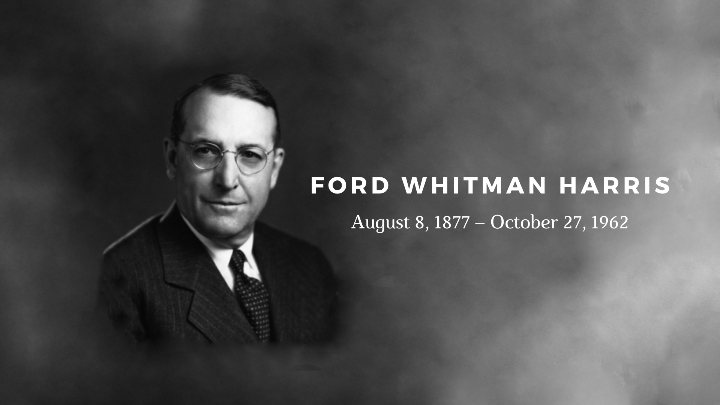What Is Enterprise Resource Planning (ERP)?
ERP, a business management system that promotes automation and integration.

Definition of ERP System
ERP is the acronym for Enterprise Resources Planning.
The word “Enterprise” refers to a business or a company, “Resources” refers to all business resources whether it be human, financial, information and data, organizational, or materials, and “Planning” is the action of careful resource allocation with the objective of achieving business goals.
Just like its name, the general definition of ERP is a system that helps businesses manage their resources through the automation and integration of business processes such as planning, purchasing inventory, sales, marketing, finance, human resources management, and more into one single platform.
Here are some other definitions of ERP system according to several different sources:
“ERP system is a business management system comprises of a set of software that integrates and manage all business functions within an organization.”
(Zornada and Velkavrh, 2005)
“ERP is a comprehensive information system that supports the information needs of all the business functions, in real-time, including human resources, finance, marketing, operations, customer information, sales, and supply chain.”
(Seng Woo, 2007)
"ERP system is a packaged business software that automates and integrate the business processes of an organization, manage a common database across the enterprise, and access information in a real-time environment.”
(Marnewick and Labuschagne, 2005)

History of ERP System
The Enterprise Resource Planning (ERP) system did not just form itself out of thin air. If we were to trace back the history of ERP, it actually dates back to more than 100 years ago.
Before the ERP system became a powerful business management system that all businesses now know of, there was the Economic Order Quantity (EOQ) model.
In 1913, an engineer named Ford Whitman Harris developed the EOQ model, which is a paper-based manufacturing system for the purpose of production scheduling.
For decades, the EOQ model was the standard for all manufacturing businesses.
However, in the 1960s, another engineer named Joseph Orlicky stepped up the game with Material Requirements Planning (MRP) system.
MRP is basically an improved version of the EOQ model that is developed to streamline production schedules and place orders for items according to demands.
In the year 1964, Black and Decker became the first company to have implemented MRP. After that, more and more businesses have started using the system as well.
By the year 1975, there were as many as 700 companies using MRP, making the system a manufacturing standard for all businesses until the introduction of the Manufacturing Resource Planning (MRP II) system in the year 1983.
The MRP II which was a more advanced version of MRP was developed by Oliver Wight. MRP II is defined as, a system that assists manufacturing businesses in planning their resources more effectively by covering a wider range of operations such as, invoicing, work center control, payroll, contract management, capacity planning, and more.
By the year 1990, with the advancement of technology and computer software, the need for business process integration escalated quickly.
Business activities beyond manufacturing such as human resources data, customer relationship management, finance, accounting, and more needed a business management system as well.
Thus, the term Enterprise Resource Planning (ERP) system is coined by Gartner Group to represent a new business management system that covers all industries, not just manufacturing.
Today, ERP systems are implemented by almost every single business regardless of their industry.
Embracing the internet, the technology of ERP systems has been constantly evolving so as to better suit the needs of all businesses.
The software-as-a-service (SaaS) delivery model of ERP system that is delivered through cloud technology, is the type of ERP system that is commonly adopted by businesses nowadays.

Business Values of ERP System
For a very long time, even before the term Enterprise Resource Planning was introduced, businesses have always been trying to implement some kind of enterprise resource management practices into their daily operations.
Businesses, no matter how big or small, have always faced all kinds of challenges when it comes to managing several different businesses departments or functions efficiently and effectively.
The choices of whether to sacrifice certain resources of the business so as to gain control, or to hire additional employees for better departmental management have always been a dilemma for business owners.
Thankfully, with the introduction of the Enterprise Resource Planning (ERP) system, businesses can now have a system that provides business values as such:
Improved business insights
Enhanced collaboration and efficiency
Lowered management operational costs
Enhanced customer services
Lowered risk
- Improved business insights: Having a single integrated platform across all departments, business owners, and employees can have better insights on information and analytics of the business.
- Enhanced collaboration and efficiency: Through integration, data and information can be easily accessed at any given time. This in turn enhances communication and collaboration among departments, thus promoting the efficiency and effectiveness of business operations.
- Lowered management and operational costs: Costs of acquiring new resources to carry out business processes can be reduced through automation.
- Enhanced customer services: With an ERP system, the customer services of businesses can be vastly improved by staying connected with their customers and providing them with the necessary support to solve their problems.
- Lowered risk: By having full visibility and traceability of the business, risks can be forecasted so that proper initiatives can be taken to lower or prevent the impacts of risks.

Get Started with Odoo ERP System
There are a ton of ERP systems out there in the market, but which of them are actually user-friendly, fully integrated, flexible, and affordable, all at the same time?
Odoo’s ERP system not only does it have a user-friendly user interface, fully integrated platform, flexible dashboard controls, and affordable pricing, but it also utilizes open-source cloud technology to provide its users with up-to-date solutions.
Odoo’s ERP system also allows the automation of business processes, which is a crucial function that can help elevate businesses’ efficiency, effectiveness, and productivity.
Odoo has set out to be a company that improves businesses worldwide through a cloud ERP system.
Thanks to Odoo’s ERP system, businesses all around the globe are still able to operate as usual while keeping themselves and their customers safe amid the pandemic.
We believe your businesses deserve the best quality when it comes to ERP systems. If you think so too, then join us now!